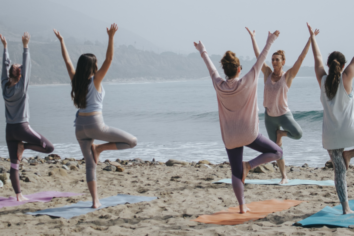How to perform pelvic floor exercises
What is a pelvic floor and what does it do?
The pelvic floor is the area underneath the pelvis that is composed of layers of muscles and other tissue. These muscles are critical to daily functions and support the organs such as bladder and bowel (and uterus in women). The pelvic floor muscles are very important in controlling the release of urine, faeces, and flatus. When these muscles are weak and do not function properly, the bladder and bowel will lack full support. This may lead to bladder and bowel dysfunction.
What are the signs of weak pelvic floor muscles?
The common symptoms of a weak pelvic floor muscles are:
- urinary incontinence,
- unable to reach a toilet in time,
- vaginal or anus flatulence when bending over,
- vaginal numbness or decreased sensation,
- tampons that dislodge or fall out,
- reoccurring urinary tract infections, or thrush
The main symptoms of a pelvic floor dysfunction is loss of bladder control, and anal incontinence.
What causes a weak pelvic floor?
The pelvic floor muscles can be weakened by traumatic injuries to the pelvic area, pregnancy, childbirth, pelvic surgery, being overweight, advancing age, as well as chronic constipation.
How to strengthen the pelvic floor?
Pelvic floor exercises are designed to strengthen the muscles around bladder, bottom, and vagina. Training these muscles can help urinary incontinence, and may prevent the need for corrective surgery. These muscles can be activated anytime, and anywhere. However, for the best results, try incorporating specific exercises that are outlined below:

Finding the pelvic floor muscles
A good starting point with the pelvic floor muscles is to lie down, resting comfortably, or to sit in a supported position. Now, imagine you are squeezing your muscles to stop the flow of urine and the passing of wind. Focus on drawing these muscles inwardly tightly. This gives you an idea of the location and function of the pelvic floor muscles.
You can also quickly identify the pelvic floor muscles by trying to stop the flow of urine while emptying your bladder. If you can do it for a second or two, you are using the correct muscles.
(Do not do this repeatedly, or more than once a week. It can cause problems with emptying your bladder completely. It’s purely for identifying the muscles you’ll need to exercise.)
Kegel exercises
- Lie flat on your back with your knees bent. You can also perform this exercise sitting or standing.
- Breathe out gently, draw in your lower abdominal muscles, contract the muscles around the vagina for about 2-3 seconds and release.
- Maintain steady breathing throughout.
- Repeat the exercise 10 times, then rest for 10 seconds. Aim to do 2–3 sets.
Marches
- Lie flat on your back with your knees bent.
- Draw your pelvic floor up and lock in your core.
- Slowly lift one leg up to a tabletop position.
- Make sure you stay connected to your deep core.
- Slowly lower this leg to the starting position.
- Repeat the movement 10 times and alternate legs.
Heel slides
- Lie flat on your back with your knees bent.
- Draw your pelvic floor up, lock in your core, and slowly begin to slide your heel away from you.
- Make sure you stay connected to your deep core.
- Find the bottom position, hold it for about 5 seconds, and bring your heel back to starting position.
- Do 10 slides on each side and alternate legs.
Happy Baby Pose
- Lie flat on your back with your knees bent.
- Bring your knees toward your chest, keeping them at a 90-degree angle, with the soles of your feet facing up.
- Grab and hold the outside or inside of your feet.
- Spread your knees apart gently. Then, bring your feet up toward your armpits. Make sure your ankles are over your knees.
- Flex your heels and push your feet into your hands.
- Stay in this position for several breaths or gently rock from side to side.
Summary
Pelvic floor muscles are very important in assisting with essential bodily functions. Kegels, marches, heel slides, and happy baby pose are exercises that help strengthen these muscles.


